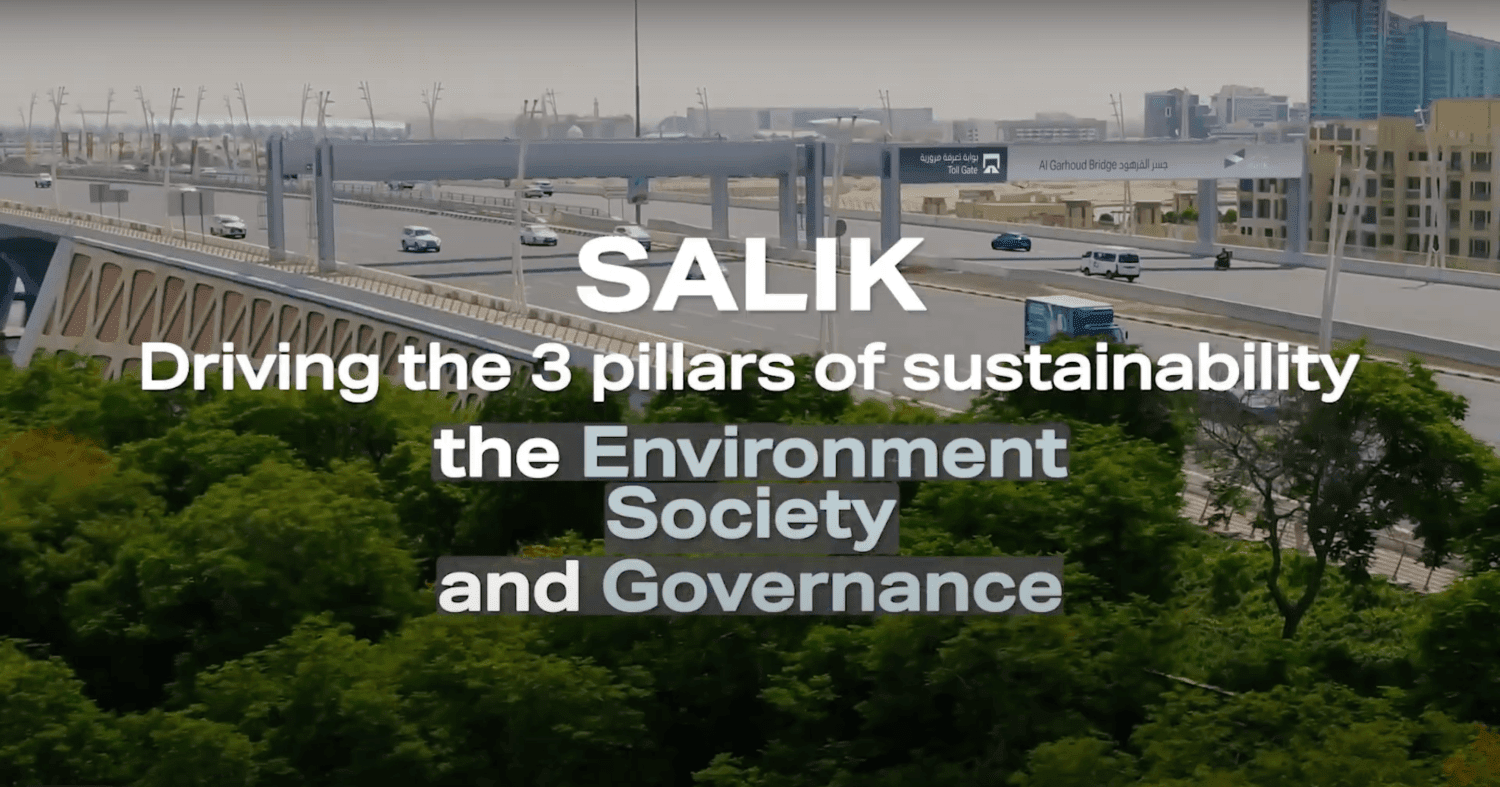GHG Emissions
Salik plays an important role in reducing GHG emissions and enhancing air quality in Dubai by streamlining traffic flow and promoting seamless mobility.
By optimising toll operations and minimising congestion, Salik helps to reduce vehicle idling times, which in turn lowers fuel consumption and decreases emissions of CO2 and other greenhouse gases and air pollutants. This efficient toll system contributes to smoother, faster commutes, allowing vehicles to move more freely and reducing the environmental impact of prolonged traffic jams. As one of the players in Dubai’s sustainable mobility strategy, Salik aligns with the city’s vision of a cleaner, greener future, directly supporting efforts to improve air quality and overall public health.
In 2024, the Company adopted a new GHG emissions assessment methodology and recalculated the previous year’s data. Salik’s GHG emissions are relatively low and are associated primarily with the energy consumption of toll gates, the office at Festival Tower, and data centres. Scope 1 emissions include those from fuel consumption of the Company-owned vehicles (the amount of refrigerant leakage from the centralised AC system is negligible and was not included in calculations). Scope 2 emissions are calculated from grid electricity consumption using location-based methods.
In 2024, Salik’s Scope 1 emissions from the Company‑owned vehicles increased by 3.9 times, reaching 15.39 tCO₂e. This increase was largely due to a low base effect, as the Company only acquired vehicles in Q3 2023.
The Scope 2 emissions increased by 8.4% to 426.99 tCO₂e due to the expansion of the Company’s operations and workforce, bringing total GHG emissions (Scope 1 + Scope 2) up by 11.2% to 442.38 tCO₂e. The assessment of Scope 3 emissions is still in progress.
GHG emissions intensity saw a moderate increase of 2.3% in 2024, reaching 193.02 gCO₂e per AED 1,000 of revenue (2023: 188.7 gCO₂e).
To cut GHG emissions, Salik implemented server virtualisation, consolidating ten virtual machines onto a single physical server. This strategic shift reduced hardware usage by 50%, surpassing the initial 40% target. Looking ahead, the Company aims to transition to a hybrid infrastructure by 2026 to further enhance sustainability.
Salik’s move towards a paperless system (see ‘Waste Management’) has also contributed to emissions control. The Smart Salik App and website enable customers to complete all transactions digitally, with each self‑service transaction saving an estimated 12 kgCO₂e—amounting to an annual saving of 4.9 tCO2e.
Further supporting carbon reduction efforts, in 2023 Salik took part in the Dubai Financial Market’s (DFM) Voluntary Carbon Credits Trading Pilot Programme. The Company purchased and fully retired 715 units of Carbon Retirement Rights (CRRs), equivalent to 715 tCO₂e, for the internationally certified DEWA Chiller Station L project in Jebel Ali. By enhancing turbine efficiency with an innovative air chilling system, this project enables the same electricity output with reduced fossil fuel consumption. As a result, Salik effectively offset 85.1% of its total GHG emissions for 2023 and 2024 combined.
In 2025, the focus will be on reducing Scope 2 emissions and refining data collection processes. Salik also plans to establish preliminary targets for Scope 1 and Scope 2 emissions in line with SBTi while continuing to assess Scope 3 emissions. Once the Scope 3 analysis is finalised, the Company will adjust and confirm its overall targets accordingly.
| 2023 | 2024 | Δ 2024 to 2023 | |
|---|---|---|---|
| Scope 1 | 3.98 | 15.39 | +286.7% |
| Scope 2, including: | 393.99 | 426.99 | +8.4% |
| 24.26 | 26.79 | +10.4% |
| 147.77 | 173.83 | +17.6% |
| 221.96 | 226.36 | +2.0% |
| Total emissions (Scope 1 + Scope 2) | 397.97 | 442.38 | +11.2% |
